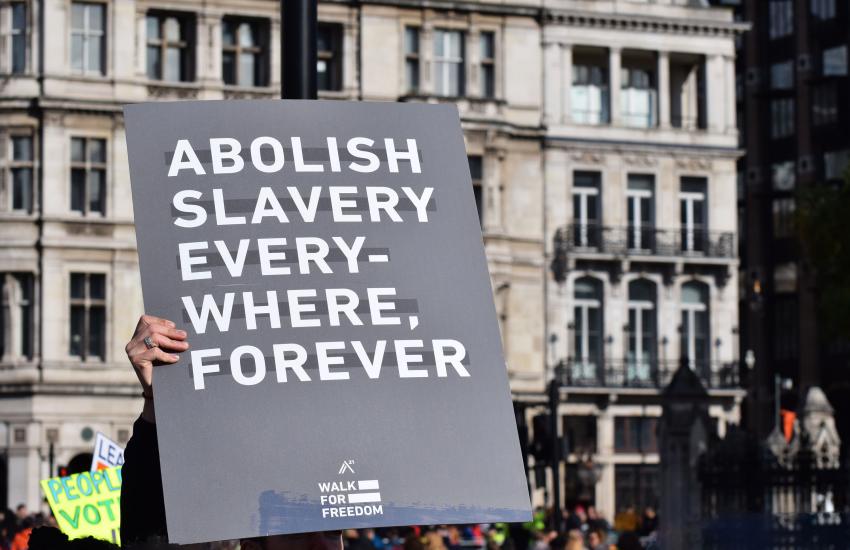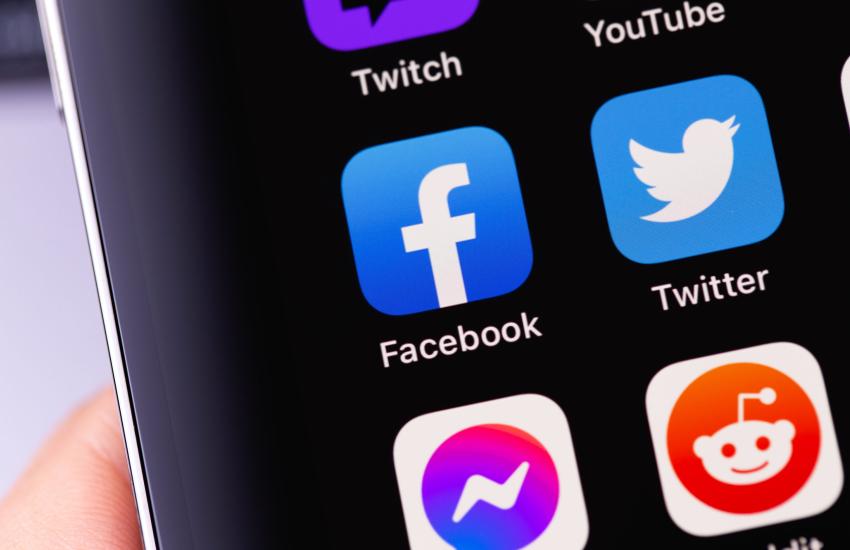Technology’s Good and Evil: Fueling and Fighting Human Trafficking
As artificial complex capabilities become more accessible for individuals, human traffickers leverage these to achieve nefarious goals. Similarly, individuals and nongovernmental organizations are stepping up as states find it hard to keep up.
Within their use of modern technology, traffickers must be viewed as illicit commodity traders, explained Andrew Wallis, CEO and co-founder of Unseen UK, an organization that provides safe houses and support for survivors of trafficking and modern slavery. “There’s an element of smarts around ‘I need to get my commodity to market, and I need to maximize the profits,’ and as with any other sector, it’s looking at technology as to how it can facilitate that,” Wallis said.
“Human trafficking is the trapping and exploitation of a person using deception, violence, or coercion. It generally takes three main forms: forced labor (which includes sex trafficking), forced marriage, and forced organ removal,” defined the Council on Foreign Relations, a think tank.
There are 40.3 million victims globally and traffickers earn at least $150 billion yearly, according to the International Labor Organization (ILO), a United Nations body. In 2005, it was estimated the activity commanded $32 billion.
Subsequently, Wallis has taken notice of a slight shift in trafficking trends. “Fifteen years ago, most people thought of trafficking as around trafficking for sexual exploitation, but I think now, certainly within the UK, but also true globally, that the vast majority of people are trafficked into situations of forced labor,” he told SIGNAL Media in an interview.
ILO figures support this view, showing that 68% of victims were used for forced labor.
Social media channels have provided a platform for recruiting and controlling individuals, Wallis stated. For example, traffickers use keywords or code words to identify and control potential victims or quote customers a price.
The first tools in the criminal arsenal are generative artificial intelligence and large language models. These have streamlined sales teams and newsrooms alike, but now they are being utilized against individuals online.
“We’re speaking about the possibility that criminal networks that operate overseas, with a different native language, can recruit people in countries with a different language. There, the possibilities are endless,” said Alan Mai, a cybersecurity expert based in Madrid, Spain.
Mai explained how criminals employ the latest technology to reach potential victims.
“By leveraging their ability to generate convincing and clear texts, with a completely native language, with tones that can be tweaked to add to their persuasion ability, I believe combining this with today’s distribution channels and internet penetration in places like Latin America increase risks,” Mai said. His company, Bloka, focuses on phishing and specializes in stopping attacks that seek to persuade victims.
Control is a large part of any trafficking case, and while the concept of burner phones is still very much alive, Wallis noted that technologies such as webcams and monitors allow abusers to remain in power even from different locations.
AI poses a challenge for the law enforcement community, as traffickers leverage the technology. “Making things look more and more legitimate, whether it’s a contract or a website,” Wallis said. “If they can deceive you into believing that this is legitimate in that whole process, then it’s easier to fall into that trap.”
Mai sees an information asymmetry between enforcement and criminals, where the former have little coordination and the latter employ fast-changing technologies and deep knowledge of their victims and circumstances.
A nonprofit scours open-source data employing over 40 tools to find traffickers and turn all information in to law enforcement agencies.
“When we bring these data sets together in an investigation, they have value together in helping us unpack ... human trafficking or exploitation,” said Christopher Kemp, operations manager at the Anti-Human Trafficking Intelligence Initiative.
Law enforcement agencies, especially at a local level, are unable to use tools with a global reach. This puts them at a disadvantage, according to Kemp.
“The digital space isn’t a conventional plane of criminal activity that we’re focused on, and we’re seeing that if law enforcement doesn’t access, or use, tools or technology of this type, they’re not going to be properly situated to investigate that crime,” Kemp said.
Kemp explained that a username may be the only piece of information investigators obtain. But in most cases, it leads nowhere unless there is deep technological knowledge.
“As the investigation progresses forward, you have to add more information to the investigation in order to add pretext, context, in order to identify motive, victims,” Kemp explained.
Another tool in the AI arsenal is to identify and track victims and abusers through cellphones. Every phone lens has a unique identifier, and AI can look at the data and detect a match in rooms or locations, further providing information on where exploitation is taking place, according to Wallis.
Unseen UK, which also runs the UK Modern Slavery & Exploitation Helpline, also uses machine learning to analyze and detect patterns in data, consequently allowing responders to be more aware and see patterns or ongoing trends.
As criminal networks streamline their operations and meet an increasingly empowered global citizenry working to stop them in a technological game of cat and mouse, the reality of a world with large disparities is that in regions like Latin America, people facing harsh economic realities are looking for alternatives to make ends meet. Crude regional networks start by leveraging social media algorithms.
“We had at least three cases through Facebook or Instagram of people who want to go to Spain, to Europe,” said Carina Sánchez, an attorney at Paraguay’s Specialized Unit to Fight Against Human Trafficking and Child Sexual Exploitation. Sánchez is the lead law enforcer for these offenses in her country, and her work receives attention from regional and international bodies like the United Nations.
South America saw a 32% decrease in victims per 100,000 population, comparing 2019 with 2020, the year of the pandemic, according to the 2022 United Nations Office on Drugs and Crime (UNODC) report.
While 75% of trafficked South Americans stay in their country, around 4% make it to North America, according to the UNODC. Despite these figures, Sánchez identified Spain as a country of interest during investigations, as culture and language makes it easier for traffickers to co-opt victims. She characterized her cooperation with authorities from that country as long and effective.
Still, since the pandemic, Sánchez has seen an upward trend in trafficking, not yet documented by independent organisms.


Technology allows better communication, especially as 97.9% of internet users in Paraguay access through their cellphone, according to official data.
“We see a contact with the trafficker at the destination point, and communication starts through social media or WhatsApp,” said Sánchez. She added that those trying to convince a person to leave their home use a variety of methods to earn the victim’s trust.
As technology helps this activity evolve, international law enforcement ups its game.
“In the beginning, Interpol helped us get things done at national and international levels, but later they focused on administrative work, like extraditions and warrants ... since last year they activated an operational department to work in human trafficking, child exploitation and migrant issues,” Sánchez said in an interview.
This department helps at various levels, adding value to local and regional law enforcers.
International cooperation receives a boost when attorneys from different countries meet and establish direct contact. Formal channels tend to be slow, according to Sánchez; therefore, directly calling a counterpart in a neighboring country allows efficiency when time is of the essence.
Offline engagements like those organized by the United Nations, governments and international agencies create opportunities for attorneys to meet and build trust. Sánchez added the local U.S. Embassy provides training to her staff through cooperation agreements.
While the pandemic slowed criminal trends, there was an 18% growth in child victims detected in 2020, according to UNODC—a direct result of leveraging innovation for profiteering.
“We are seeing that with technology, we have seen several cases, especially during the pandemic, where very young children using cellphones were being recorded using cellphones, to be abused,” Sánchez said. She stressed that the most common abusers were direct relatives.
In other cases, families did not know what was happening. Criminals in remote locations use video communications to groom their victims without their families knowing, according to Sánchez.
The use of technology to exploit children without trafficking them underscores the fact that this activity will grow in complexity, and challenges to law enforcement will continue to mushroom.
In the future, Mai fears that nefarious actors will employ deep fakes to use avatars that look and sound like trusted individuals and convince unsuspecting victims to act according to the orders of criminal gangs.
These kinds of tools may even expose new segments of the population not previously considered vulnerable to falling into the entrapments of bad actors around the world.






Comments